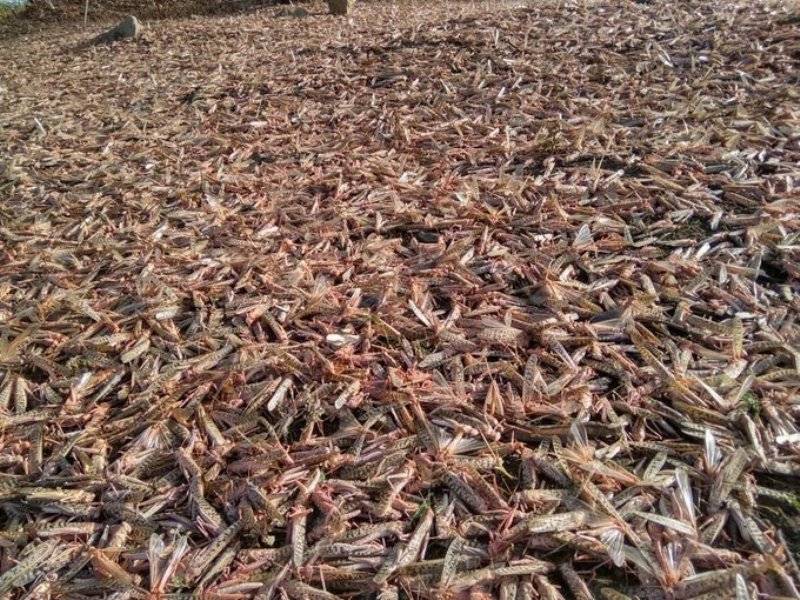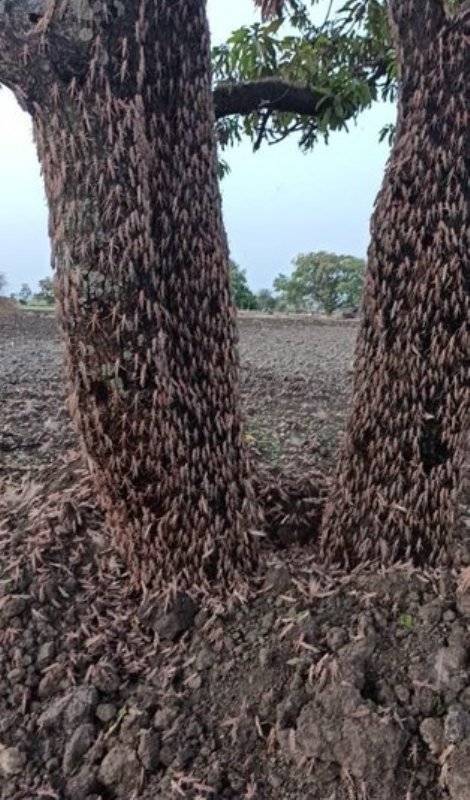
2020 could get even worse. I am even getting a feel that 2020 is the last year of human kind is it so? Climate change is for real and we face unreal weather conditions, cyclones and also facing threats like locust swarms too. There's a global locust swarm in existence right now -- the worst in many decades -- and India could suffer from a brutal wave in the coming months. A 1 sq km swarm in 1 day can eat as much food as 35,000 people. After COVID-19, these mega sized locusts could be India’s Greatest Challenge this summer. They are already entering Jhansi and have already entered Rajasthan, Punjab, Haryana and Madhya Pradesh threatening major damage to crops.

Swarming is a kind of overcrowding. The Increased tactile stimulation of the hind legs causes an increase in levels of serotonin. This increase in serotonin causes the locust to change colour, eat much more, and breed much more easily.
With Heavy rains in 2018 in the Rub' al Khali of the Arabian Peninsula the current outbreak started ; in Spring 2019, swarms spread from these areas, and by June 2019, the locusts spread north to Iran, Pakistan, and India and south to East Africa, particularly the Horn of Africa. Due to favorable climatic condition, this locust swarm had started ravaging agricultural croplands in Eastern Africa. As explained in reports, The swarms in the Horn of Africa had in fact first arrived there at the end of summer 2019. They had moved in from the Arabian desert, where good breeding conditions in the months prior had allowed them to multiply by an astonishing 8,000-fold, according to the UN’s Food and Agricultural Organization (FAO). In the autumn months of 2019, the insects spread further inland from Somalia and Ethiopia into countries including Kenya and Uganda. In Kenya, the FAO’s locust watch service identified one swarm that was up to 60km long and 40km wide –In fact, officials estimate that the swarm was made up of up to 20 "BILLION" individual locusts. In similar times, the locusts also moved from the Arabian desert into Middle Eastern countries, such as Iran, Oman, Bahrain and Kuwait, and into parts of Asia, such as India and Pakistan.

Now a locust swarm has hit India - moving in from the direction of Pakistan. The locust swarms which appeared first in Sriganganagar district on May 11 had now spread up to Churu in northeastern Rajasthan. As most of the agriculture fields are empty in Rajasthan and pink locusts have not much to eat, they are progressing fast towards Haryana. Meanwhile, swarms which came in from Jaisalmer area had reached up to Ujjain area in Madhya Pradesh. Banaskatha area in Gujarat is also affected by the latest attack by locust swarms.
Parween Kaswan, an IFS officer tweets that this time desert locust attack is severe. They have arrived earlier, in huge numbers & now reached till Panna in MP. The changing climate conditions are linked with locust growth in east Africa. The swarms has potential of eating everything & destroy the crops.
Experts believe that locust swarms are a problem of global level and due to climatic conditions in Middle Eastern Africa, they are becoming recurrent problem for East Africa, Iran, Pakistan and India. Climate Change is most definitely making these swarms worse.
Images Courtesy: TWITTER















